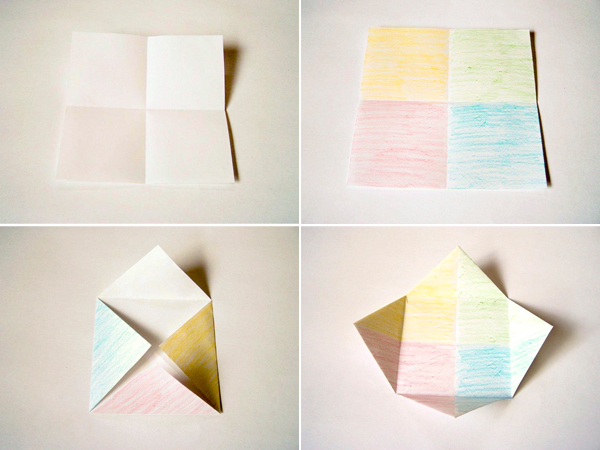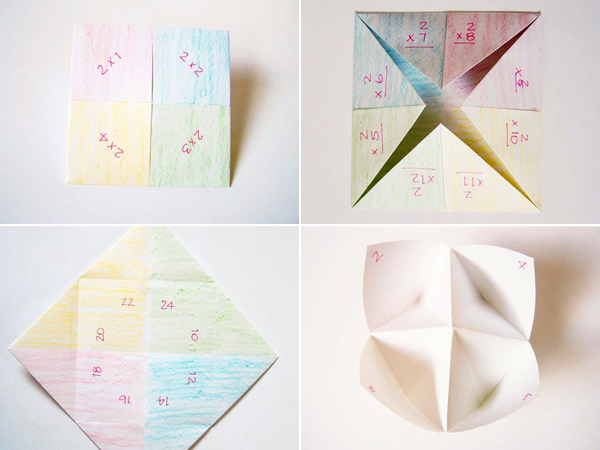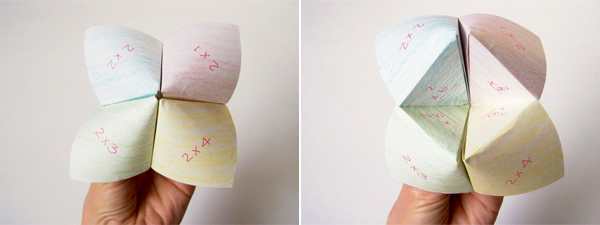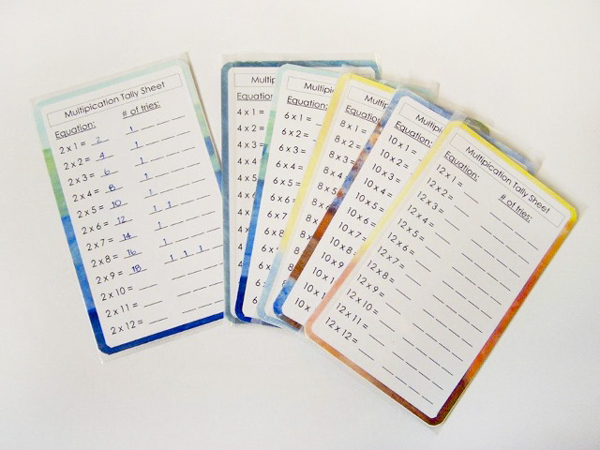Times Table Fortune Tellers (with printable tally sheets)
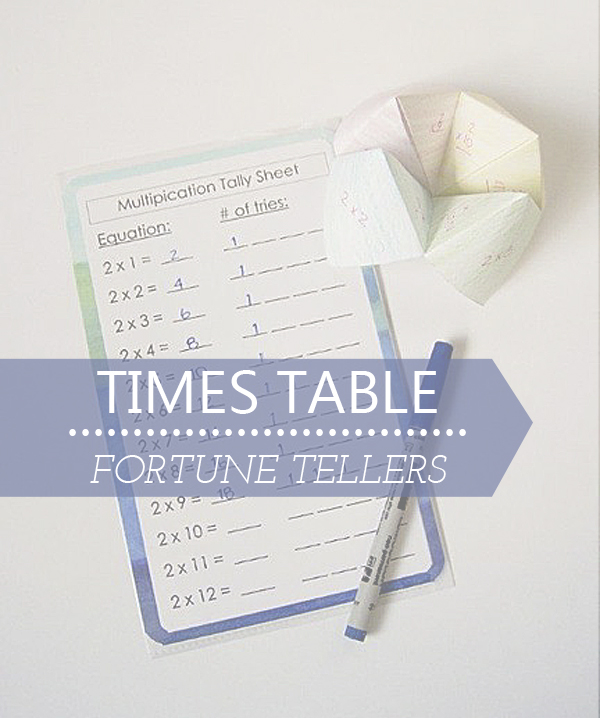 Joey from madebyjoey is with us today to share a fun way for children to master the multiplication facts. My girls love making these fortune tellers and I am sure that your children will too!
Joey from madebyjoey is with us today to share a fun way for children to master the multiplication facts. My girls love making these fortune tellers and I am sure that your children will too!
Practicing multiplication often seems repetitive to children, but it is beneficial to have these math facts mastered before entering the intermediate grades.
Paper fortune tellers have been around since the 1950’s and have been adapted in many ways for many different uses. This game will help to determine which multiplication equations have been memorized and which still need review by using my printable tally sheets.
Here is how I made our multiplication fortune tellers (btw – kids can help make these too, coloring is optional):
- Trim 12 sheets (8.5″x11″) of white paper into 8.5″ squares.
- Fold the square in half both ways to create 4 boxes.
- Lightly color each box a different color.
- Flip sheet over and fold each corner to the center.
- Flip sheet over again and fold corners to the center.
Now you have folded the paper into a fortune teller you can start writing the equations and hidden answers!
- On the side with 4 colored squares write on each square one multiplication equation starting with (your number) x 1, up to (your number) x 4. (in the example my number is 2)
- Flip over and continue writing equations in the colored triangles from (your number) x 5 up to (your number) x 12.
- Open each flap and write the answer.
- Finally open up the fortune teller with the uncolored side facing up. In each corner write the answer to the equation on each of the four colored squares.
Now it is ready to use!
Next print off my printable tally sheets. I have trimmed and mounted ours onto extra water colour paintings. (a good way to reuse artwork!) I then “laminated” the sheets by trimming a clear plastic page protector to create a sleeve for 2 tally sheets to slide in back to back.
Note: If you know that your child has memorized some of the numbers then only make up the sheets that you need.
To play you will need:
- fortune tellers
- laminated tally sheets
- non permanent felt pen
- damp cloth to clean tally sheet
Game can be played with 1 or 2 players. If playing with 2 players you may wish to make up 2 sets of tally sheets or have both players work together to complete all of the equations.
To play:
- Teach child how to maneuver the fortune teller with their fingers.
- Have Player A chose an equation from the closed fortune teller, Player A then answers the question and Player B verifies that they are correct by checking hidden answer. If so, Player A writes the answer on the tally sheet next to the equation chosen and mark that it took 1 try to get the correct answer. If they do not say the correct answer, they mark 1try but must try that equation again on another turn before they can fill in the correct answer.
- Player B then maneuver the fortune teller with their fingers that number of times (ie: 2×2=4 times) which then reveals the inside of the fortune teller to Player 1.
- Player A chooses another equation and answers the question. Player B then lifts the flap to see if they have said the correct answer. If so, Player A records the answer and the number of tries on the tally sheet.
- Player A then passes the fortune teller to Player B and takes a turn.
- Whether the Players are competing or working together the game is finished when all the answers have been filled in correctly.
When the tally sheet is complete it will be clear which equations need a bit more review if they required several tries to get the correct answer. By concealing the answers on the fortune teller, it gives the child(ren) an opportunity to work independently and self correct their work.
Introduce one fortune teller at a time until the child feels confident that they are ready to try more. They do not need to be introduced in any particular order although it is common to start with the 2’s, then the 3’s, 5’s,10’s, and 11’s as many find that they are the easiest to remember.
I hope that you and your child(ren) find this a helpful game that aids in learning the multiplication tables. This project can also be revised to learn addition and subtraction equations.
